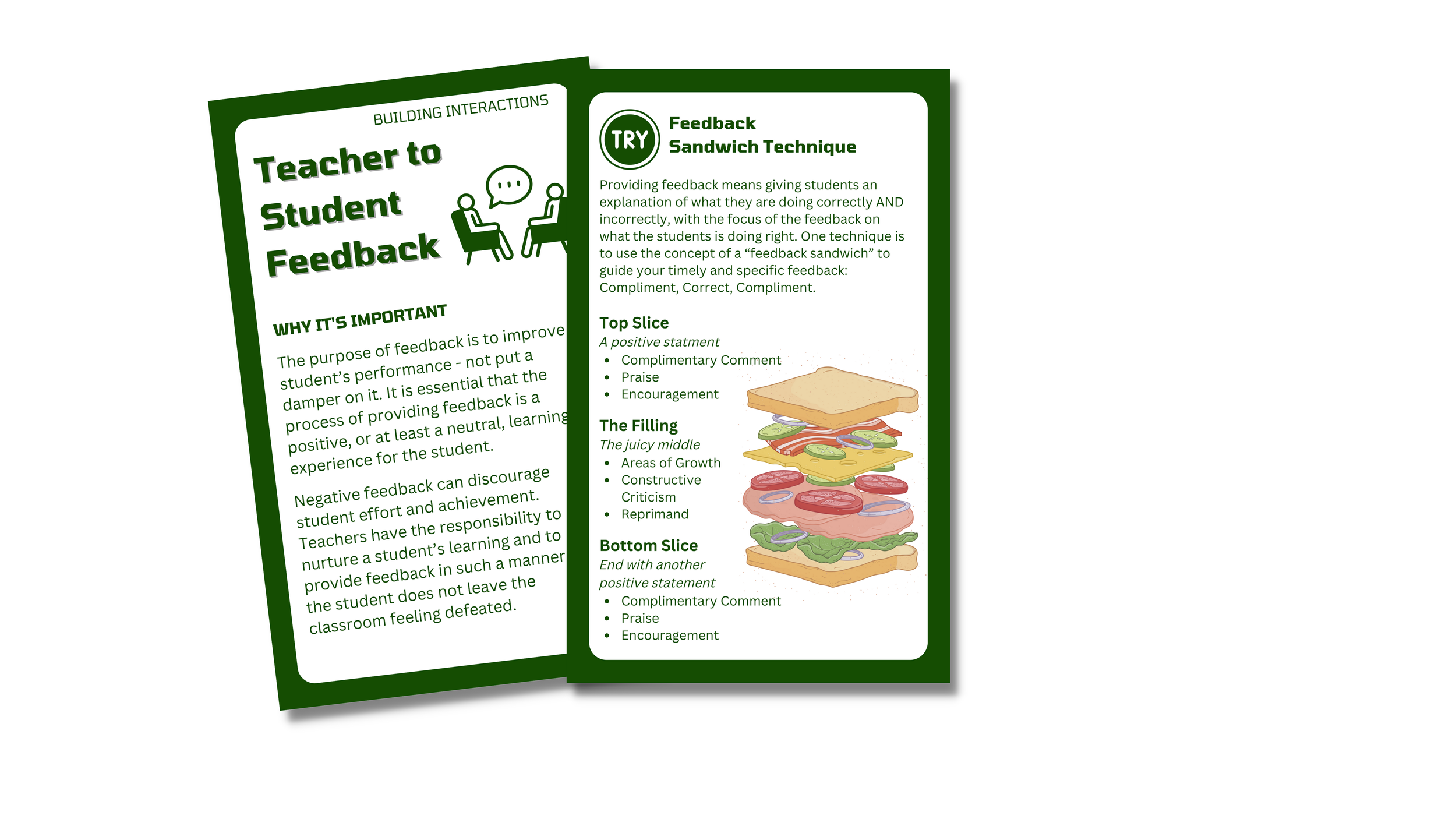Timing Really Is Everything When It Comes to Teacher to Student Feedback
As an organization dedicated to supporting teachers, we understand the importance of effective feedback in promoting growth and development. For teachers, it's crucial to understand the context in which feedback is being given and to adjust your approach accordingly. By doing so, you can help ensure that feedback is received positively and has a positive impact on growth and development.
We understand that giving feedback is an important part of the teaching process and that it may seem natural to give it as soon as possible. We used to believe this too but working with teachers from across the country, we realized that the timing of the feedback is just as important as the content itself. Feedback given after a successful assignment, test, or project is often well-received, as the positivity of the experience can decrease sensitivity and make students more open to suggestions for improvement. In contrast, feedback offered after a sub-par performance can be met with defensiveness, as students may feel more sensitive and interpret criticism as salt on a wound.
Teachers should be aware of this dynamic and time their feedback accordingly. After a successful outcome, teachers should take advantage of the opportunity to offer observations that highlight what went well and why. On the other hand, after a substandard outcome, teachers should focus on what went well and allow time for students to recover before addressing areas for improvement.
When waiting is not an option, the Feedback Sandwich Method is a technique for delivering constructive criticism in a way that is less likely to be perceived as negative. The basic structure of the feedback sandwich is:
Start with a positive remark
Provide the constructive criticism
End with another positive remark
An example of the Feedback Sandwich Method
Positive remark: "I really appreciate your enthusiasm for learning. Your curiosity and interest in the subject are really inspiring."
Constructive criticism: "However, I've noticed that you sometimes have trouble staying focused during class. This can make it difficult to keep up with the lesson and retain the information."
Positive remark: "I have faith in your abilities and I know that with some effort to stay focused, you'll be able to achieve great things in this class and beyond."
Effective teachers understand that feedback is most effective when the recipient is primed and ready to hear it, and they avoid offering criticism while the disappointment is still raw. The manner in which feedback is received can greatly impact its effectiveness, and it's essential to consider the context in which it is being given. If you want to provide even better feedback and help your students reach their full potential, we invite you to try timing your feedback to maximize its results and using the Feedback Sandwich Technique when time is of the essence.

